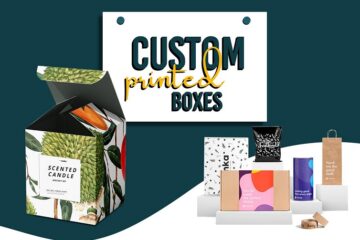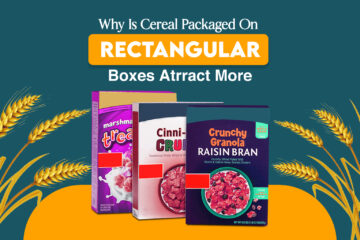No products in the cart.

What Are the Colored Dots On Packaging? A Complete Guide Here!
While you are doing shopping in retail stores and choosing a specific product, you might come across some colored dots on the packaging, especially on food packaging. What are the colored dots on packaging, actually? What are the main purposes of these colors to be included in the packaging? The reason for brands to print these colored dots on their packaging? Let’s have a look at a complete guide below to fully understand this!
A Brief About Colored Dots On Packaging and Products
Colored dots on packaging are also famous as smart dots. They are tiny dots of ink printed with a unique code that can be read by a mobile phone or scanner. These dots are useful to:
- Track and trace products
- Provide product information
- Authenticate products
Simply put, they are often used by brands on products to help customers verify the authenticity of the products.
What Are the Colored Circles On Food Packages?
The colored circles on food packages are part of a system known as the Open Date System. The Open Date System is a visual system designed by the Grocery Manufacturers Association and the Food Marketing Institute. These colored circles help customers determine the freshness and quality of a food product. In addition, these colored dots indicate the date the food product was made or packaged and how long the product is expected to stay fresh.
Let’s Learn More About the Colored Dots On Food Packaging!
Speaking of what are the colored dots on food packaging, we know that food packaging contains a lot of information. You may have seen colored dots along with useful information like nutritional information and ingredients. What are they?
This stacking grid is called the “printer color block” or “process control stack.” Each one shows the colors used to create the packaging design. Printers look at these colored dots to determine if the packaging matches the desired color scheme of the product. When a problem occurs, color blocks tell both humans and printers whether too little (or too much) color is the cause of the problem.
Dots usually represent blocks of color on most food packages. The most common colors we will find is CMYK or cyan, magenta, yellow, and black. Why?
These colors are the basis for most colors produced by printers. Most packages we see come in one or two other colors, but those colors may appear in their own color blocks (called “spot colors”).
If you don’t see colored dots on your food packaging, don’t worry. Choosing to include this item is optional and not a rule. However, most bulk food products have a variety of colored dots on the packaging. In fact, some brands even cut blocks of color during the packaging process.
Oh, and if you see colored dots, you might also find a scope crosshair icon somewhere on the packaging. This is ideal for aligning all colors and is a very useful tool for printers. However, they are completely useless for customers.
So, What Are the Color Dots On Packaging, and Why Do Brands Use Them?
The colored dots on packaging are the best way to identify different versions of the product. For example, a red dot represents or signifies a special edition. On the other hand, a green dot is ideal for identifying a lower-cost version. These color dots also help identify the product during the manufacturing process. Most importantly, the colors make it easier to differentiate between products in a warehouse.
What Are the Colored Circles On Packaging? Know the Main Purposes!
Colored circles on packaging have various key purposes that help to inform consumers and make products more attractive. Yes, these colors are not printed on the packaging unintentionally. Instead, brands print these colored circles with some convincing and essential purposes. What are they?
The Differentiator Between Different Versions of a Product
This case applies mostly to all types of food packaging.
For example, a food brand might use some circles, such as:
- Green circles on the packaging present its original product
- Meanwhile, yellow circles on the packaging for its low-fat version
- Blue circles on the packaging refer to its sugar-free version
This use of color coding makes it easier for customers to identify and provide the product that best meets the customers’ needs.
Colored Circles Signify That a Product Contains Certain Ingredients
Again, for the food packaging, these colored circles play a great role
For example:
- A product might have a green circle to indicate that it is vegan-friendly
- A red circle indicates that a product is gluten-free
- A blue circle signifies that the product is made with natural ingredients
Eventually, a specific color allows customers to make the right decisions about the products they need to purchase. Most importantly, it helps them to identify the food products that meet their dietary needs quickly.
Colored Circles Are Ideal as a Branding Tool
Yes, without you realizing it, these colored circles can also benefit your brand. How?
They will act as an ideal branding tool for your business.
For example, you can use a particular color circle to represent your brand, making it instantly recognizable to customers.
Act as an Indication of How Recyclable Product Packaging Is
Another purpose of colored circles on packaging is to provide an indication of how recyclable the packaging is. The most common colors you can see are:
- Green color refers to recyclable packaging
- Blue indicates partially recyclable packaging
- Black for non-recyclable packaging
Attract Customers
Last but not least, you surely are aware that colors can be a powerful tool in marketing. Better yet, colors can create an emotional connection with customers and draw attention to specific products. So, speaking of what are the colored dots on packaging, we should mention that these dots help you draw the customers’ eyes. How?
By creating an eye-catching and memorable visual experience. For example, bright and bold colors will help you create an exciting and energetic feeling. Meanwhile, softer colors can help create a calming and soothing atmosphere. Color dots on packaging can also help customers quickly identify a product and direct their attention to the product information, such as the ingredients and benefits.
Which Products Use Colored Dots On Packaging?
Colored dots are also used in packaging to indicate different sizes, flavors, or scents of a product. Examples of products that use colored dots on packaging include food items, laundry detergent, shampoo, facial cleansers, body sprays, and so on.
Are There Any Benefits of Using Colored Dots On Packaging?
Simply put, yes, there are some benefits you can get by applying colored dots to your product packaging. Below are some of the essential ones!
- Easier product identification
Color coding is a great way to identify products and distinguish them from one another quickly. This way, you can help customers to quickly identify the product they are looking for.
- Improved product visibility
Colored dots on packaging can help products stand out from their competitors and increase shelf visibility. This can help attract customer attention and boost sales.
- Easier organization
Color coding on packaging can help customers and employees organize products quickly and easily. This can save time and effort when stocking shelves or finding products.
- Brand recognition
Using a unique color-coding system on packaging can help customers recognize and remember your brand. This strategy will eventually help you stand out from competitors and build a recognizable brand identity.
Wrapping Up
Indeed, by discussing what are the colored dots on packaging, we now know that there are various purposes and benefits to explore. To understand better how to apply these colored dots to your packaging, you can always visit CustomProductBoxes!




